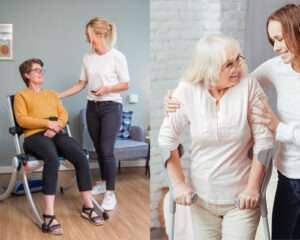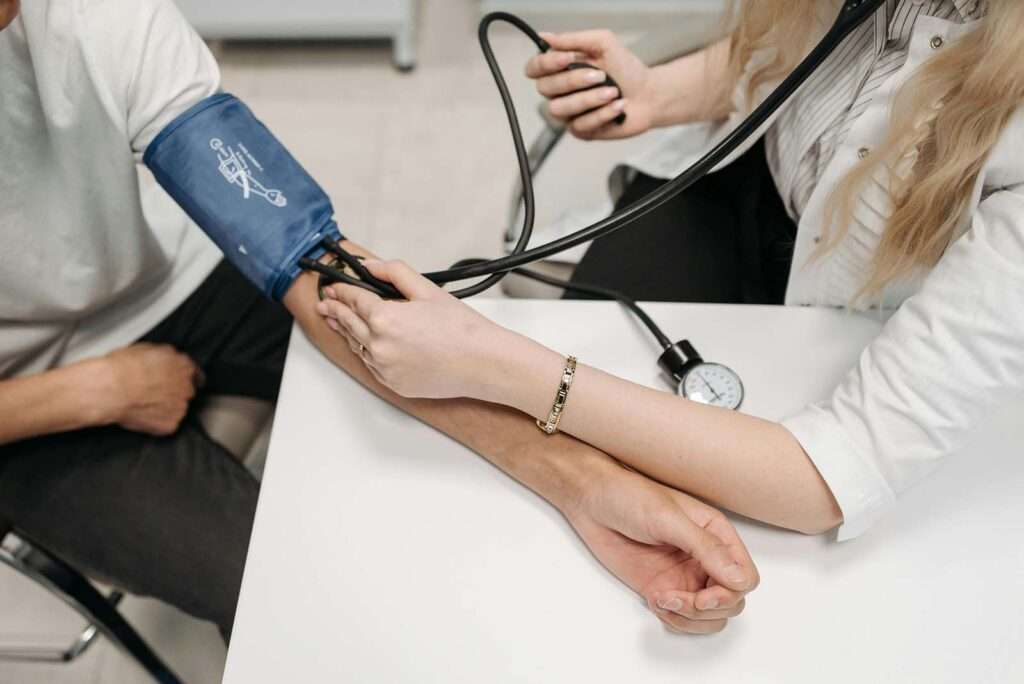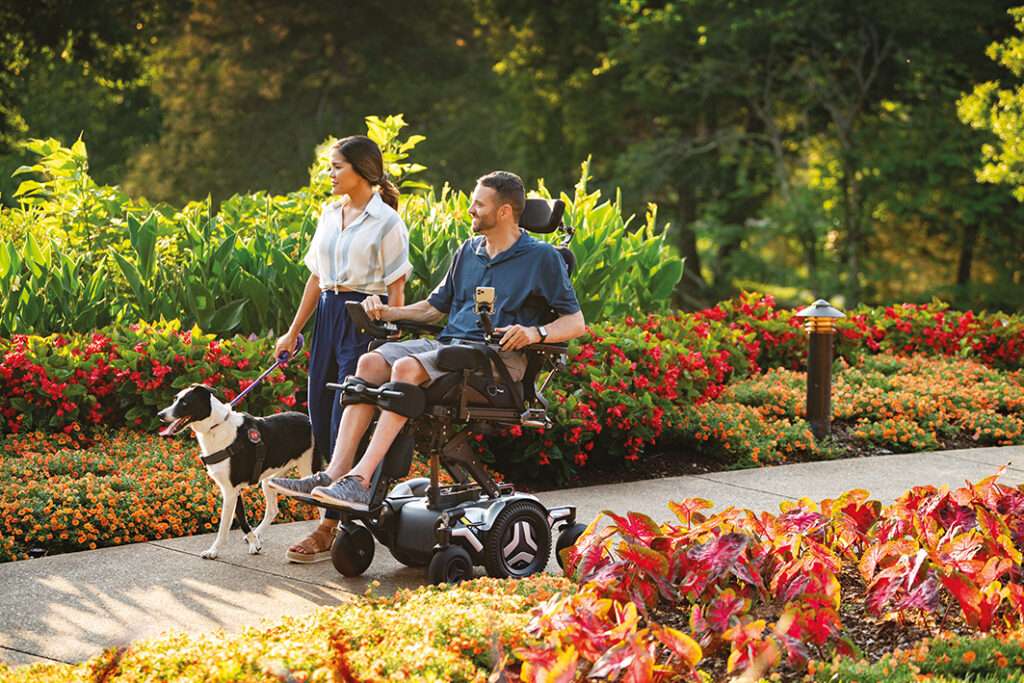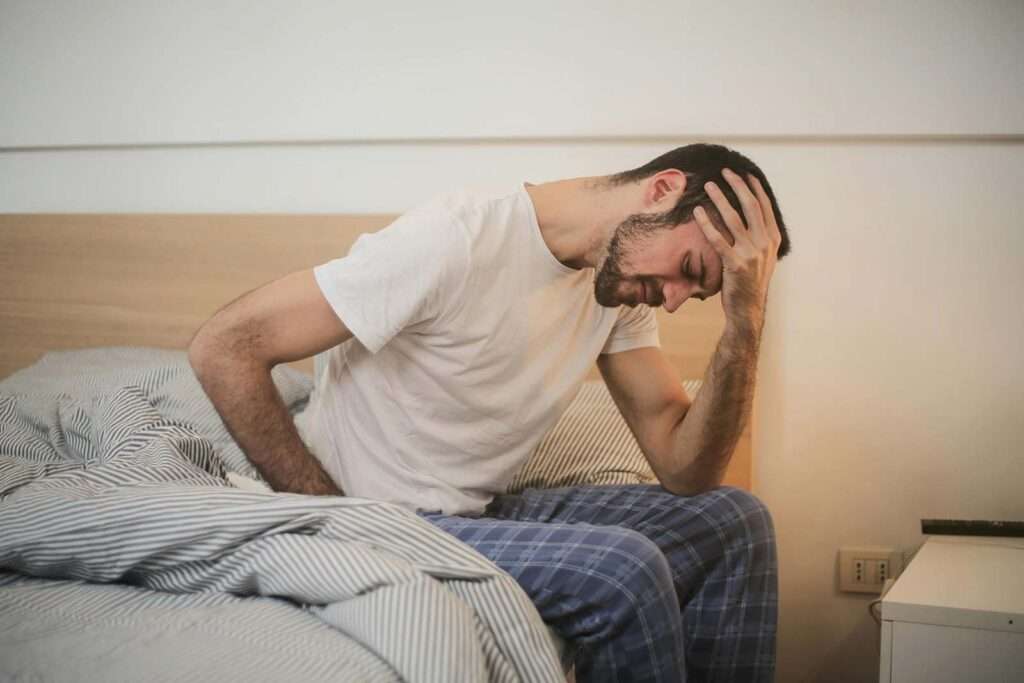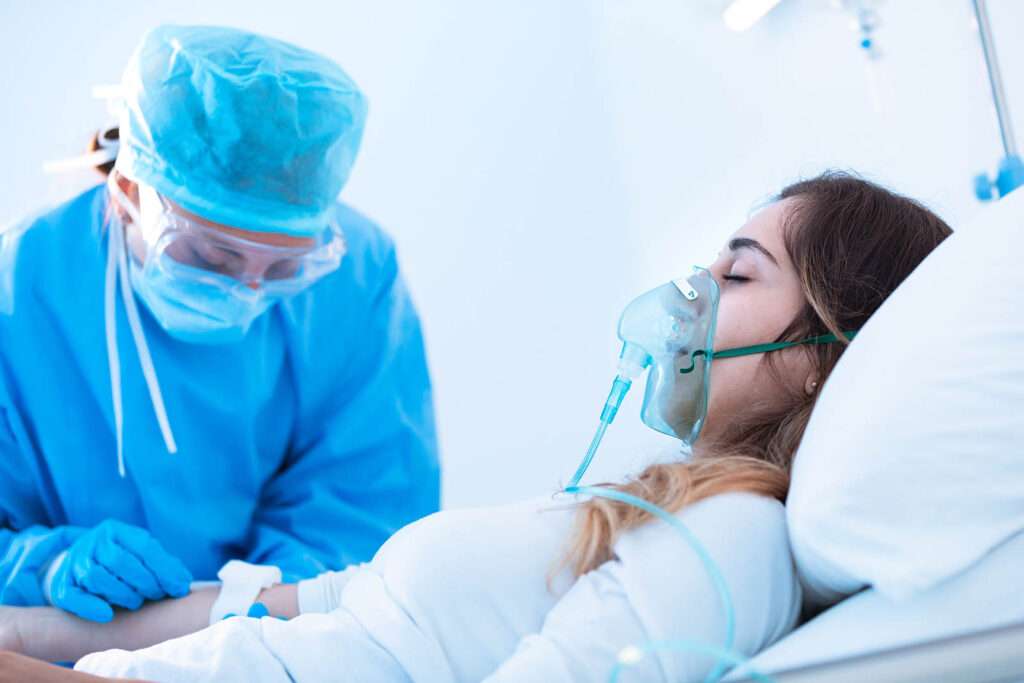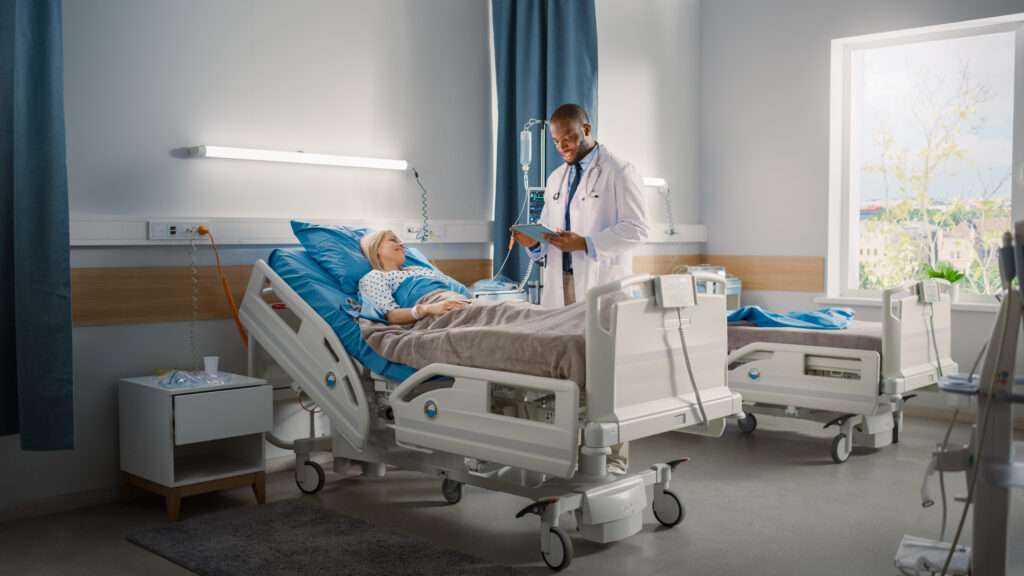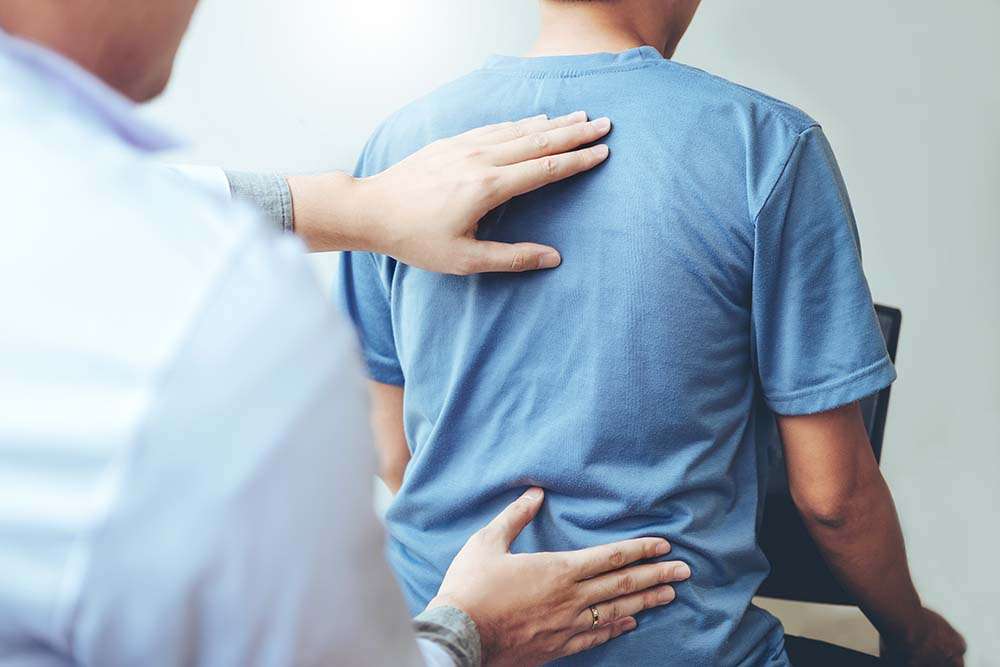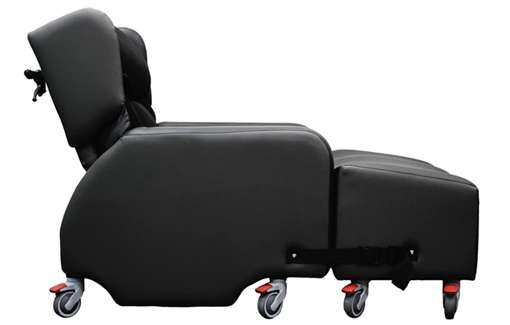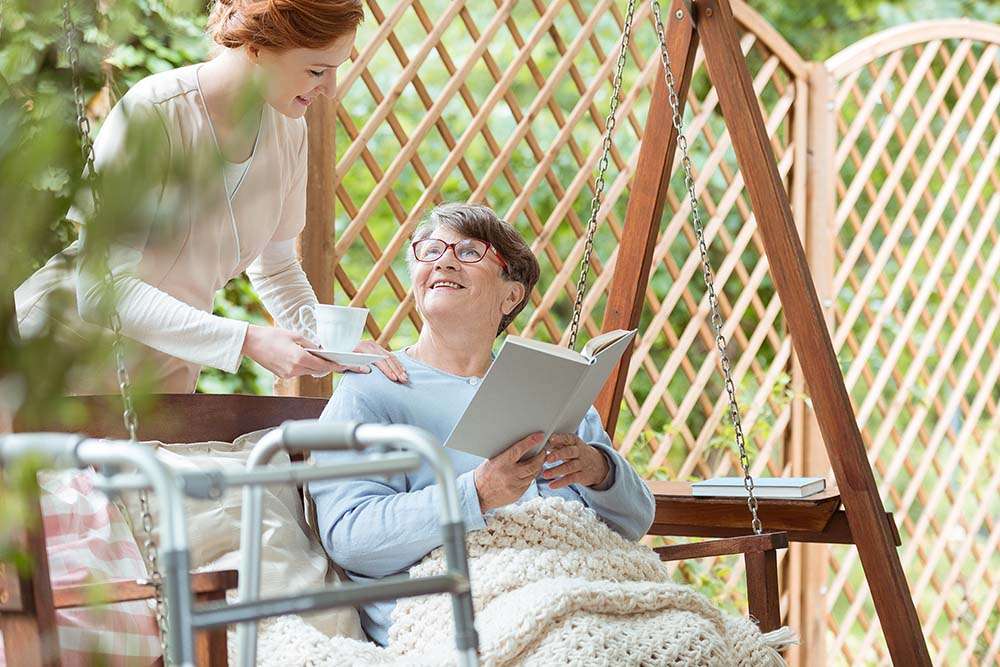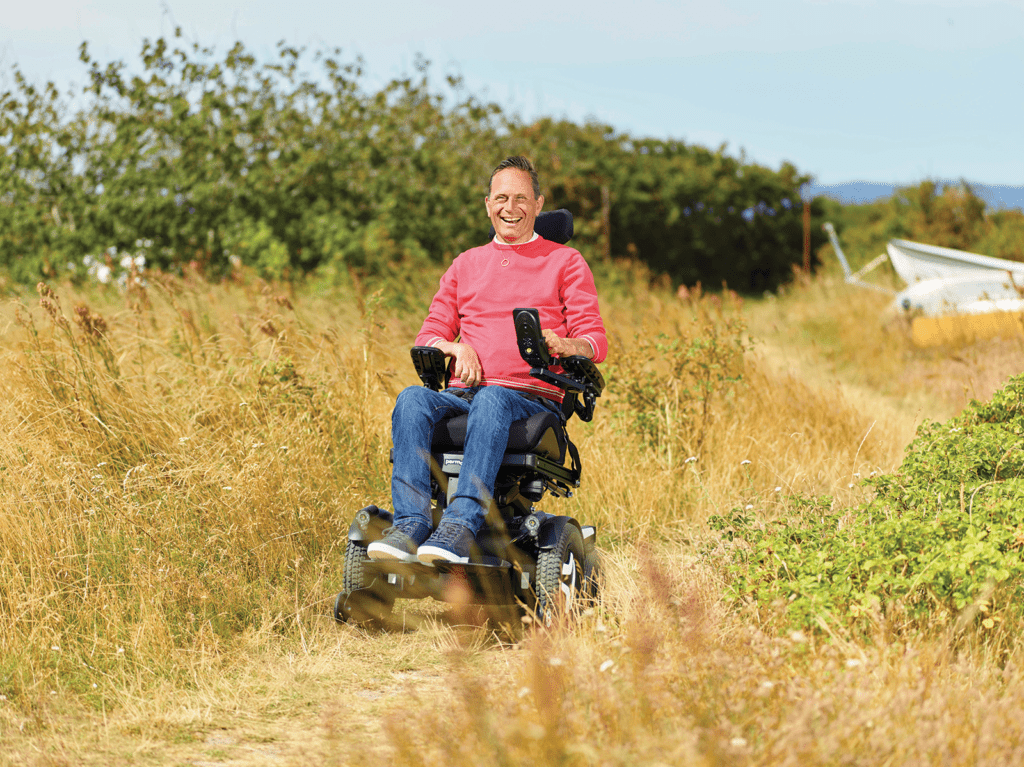There are various approaches to manually assisting a fallen person from the floor, either with assistance from another person, or by using a chair to get them into a seated position.
Jump straight to...
How to carry out a manual lift
Option 1
(assuming the person can kneel)
– Bring a chair to the side of the person
– Ask them to lean their nearest hand onto the chair.
– Ask them to bring their nearest leg forward and place their foot flat on the floor.
– With a slight push from the person, their bottom can be slid to the side onto the chair.
Option 2
– Bring the chair to the front of the person
– Ask them to lean their hands onto the chair.
– Ask them to bring one leg forward and place their foot flat on the floor.
– Ask them to push up with their leg and hands until they are standing.
Option 3
– Progress as per option 2 and as the person brings themselves into crouched stand, position another chair at their bottom so that the person can sit directly down without turning.
Pros
– Speed — a manual lift can be a quicker solution than waiting for equipment or assistance to arrive, which could put the patient at further risk of harm by staying on the floor.
– Flexibility — a manual lift allows the lifting technique to be adjusted according to the person’s need and situation, and whether they are injured or not.
– Independence — it can help the faller feel more independent if they are able to use an item close to hand such as a chair to get themselves up, reducing their dependency on others.
Cons
– There is a risk of aggravating existing injuries or causing new ones by trying to get off the floor without professional assistance.
– If the fallen person is being manually assisted by another person, this can increase the risk of infection.
– Lack of physical strength — the fallen person or those assisting them may not have the physical strength to perform the lift.
– There is risk of strain or injury to the carer assisting the fallen person
How do these methods compare against using the Raizer lifting chair?
The Raizer Lifting Chair is a unique device that assembles around the patient and lifts them to a sitting position in 60 seconds. It comes in battery-powered or manual versions and can be purchased with a headrest.
Physical effort
Getting up from the floor without equipment can be strenuous and cause complications like hernias if the person is placed under too much strain.
The Raizer removes this physical strain; it is lightweight and easy for the carer to assemble around the patient. Once assembled, no further physical input is required as the Raizer gently lifts them to their feet at the touch of a button.
Manual handling
In contrast to a manual lift, the Raizer requires no manual handling, reducing strain and the risk of injury to both carer and patient.
Training
Training is required to perform and supervise a manual lift, to make sure the correct manual handling techniques are observed. No formal training is needed to operate the Raizer, providing more flexibility for staff.
Summary
A manual lift can be useful in an emergency or when the correct equipment isn’t on hand to assist someone, and the faller feels confident it is within their capabilities. However, it is important to make sure staff are trained in the correct manual handling techniques to prevent any injuries. The initial cost of a Raizer lifting chair can reap dividends in terms of avoiding injury and staff training, all hidden costs associated with manual lifts.





